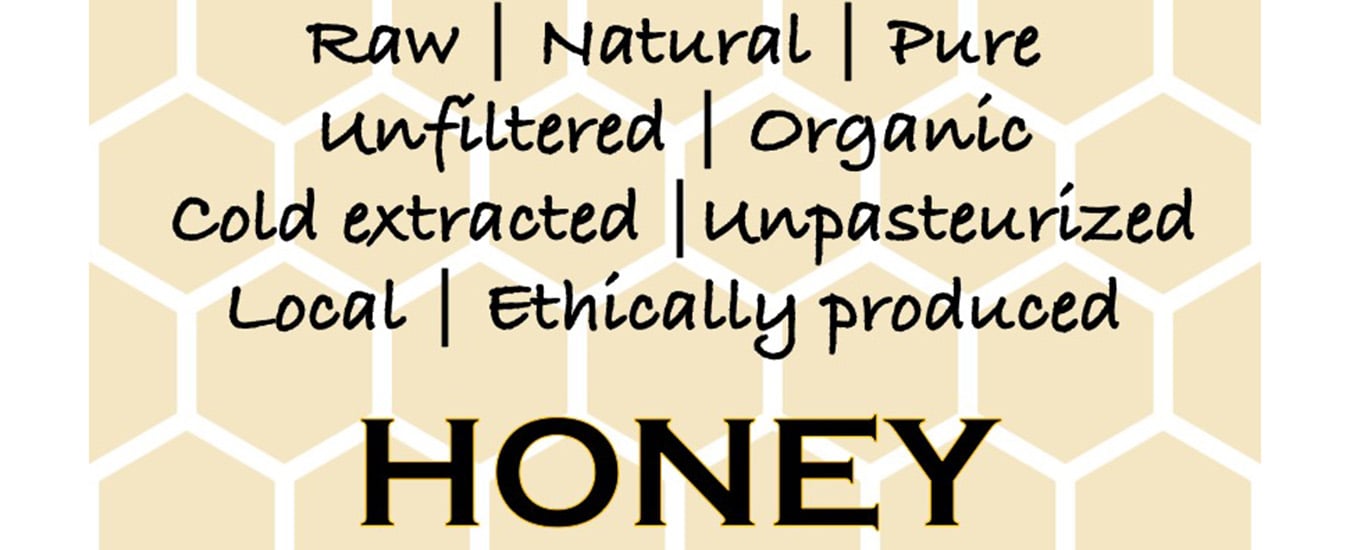Honey is a fantastic, delicious, natural product, but can we call it organic? There are scores of different honeys on the market, not just in terms of flavour, but in how the honey is produced.
There are regulations regarding honey labels. However, there are no restrictions around the use of words like ‘organic’, or many of the other buzz words used on honey labels.
‘Organic honey’ means different things to different beekeepers
Different beekeepers may mean different things when they use ‘organic’. Some may mean that they do not treat their hives with chemicals. Others may mean that they keep their hives well away from areas where pesticides and herbicides may be in use. Perhaps some mean that they do not take pollination contracts, or they assume that their honey is organic because the hive is in their backyard in suburbia.
Honey bees can travel 5 km from the hive, or even more, when foraging. That means for organic honey free from chemicals, colonies would need to be surrounded by an area of 80 km2 with no pesticide, herbicide or insecticide treatments, or other potential sources of contamination. Someone selling organic honey may or may not have checked if this wide area is chemical free. So, a label of ‘organic’ does not guarantee that the honey is in fact organic. A label of ‘certified organic’ does, however.
Certified organic honey is free of all possible contamination
Certification is a 12-month process with Australian Certified Organic. Some of the regulations include:
- locating apiaries outside 5 km of a pollution source, such as conventional or GMO orchards or crops, golf courses, livestock dip sites, and urban centre
- using only approved disinfecting materials
- avoiding antibiotics, miticides or other synthetic veterinary treatments
- painting the internal surface of hives with naturally compounded lead-free paint, water based non-contaminating acrylic paint, vegetable oil, paraffin, or beeswax
- forming the comb foundation from pure beeswax, preferably certified organic
- providing supplementary feeding only after the last harvest of the season, and from certified organic sources
- marking hives and hive parts permanently with individual ID codes
- storing honey below 45°C according to food grade standards
- keeping queens’ wings unclipped
- ensuring additional verification and monitoring when there are threats of contamination
- implementing an auditing process
- having an organic certification number.
Raw, cold extracted, or unpasteurised honey all mean the same thing
The honey is extracted and stored below 45°C. This honey will be more likely to crystallise than conventional honey. However, crystallisation rate also depends on the floral source of the honey.
Pasteurisation (heating above 45°C) removes sugar crystals and kills yeast. It results in more consistent, more runny honey. It can change the chemical profile of the honey. Some suggest that pasteurised honey contains less antioxidants. But, more research is required to determine if unpasteurised honey has higher health benefits.
If these words do not appear on the label this does not mean that the honey has been pasteurised.
Unfiltered honey crystallises more
Honey is usually filtered to remove impurities such as wax, pollen, and bits of bee. Unfiltered honey may crystallise more readily than filtered honey. Pollen contributes to the protein content in honey. Honey varieties differ in the amount of pollen they contain.

An example of a country of origin label produced using the online tool.
Source: originlabeltool.business.gov.au
Country of origin legislation requires that all products bear the green-and-gold kangaroo and a scale indicating the proportion of local ingredients.
Whatever type of honey you prefer, please be sure to buy 100% Australian. You will be supporting Australian beekeepers and the Australian industries that depend upon them for pollination.
Acknowledgements:
- This article was peer-reviewed by Steve Fuller and Tom Gillard.


